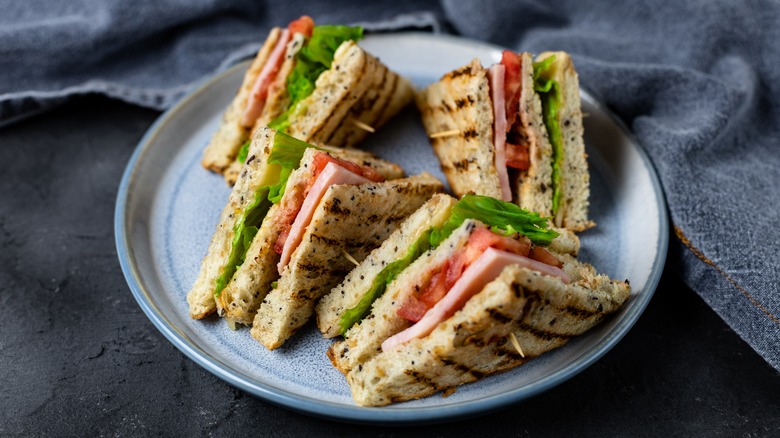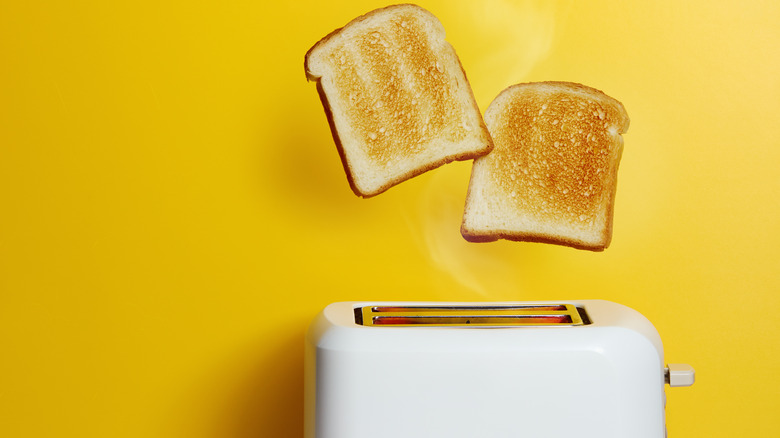Why It Pays To Toast The Bread For A Sandwich
The mighty sandwich is humble, simple, and probably the epitome of layered cuisine. There are combinations as effortless as peanut butter and jelly delicacies (and don't forget the marshmallow fluff if you're feeling nostalgic). Or, places like Subway offer a plethora of build-your-own options where you can layer all the proteins and veggies you want with cheese, condiments, and seasonings. And while it seems easy to make a sandwich (and, in theory, it is), one must pay attention to each layer to achieve the ultimate tastebud approval.
Science of Focus has done this and offers some science-based tips for improving such "sandwich architecture." For starters, the bread needs to have some contrast between its soft bready parts and its crispy exterior. Greens, like spinach, lengthen the chewing experience, and apparently, this plays a part in feeling more satiated. When it comes to assembling a sandwich, it's best to put strong-smelling ingredients towards the bottom. That way, your nose won't detect these odors as easily, which makes the sandwich taste better overall.
Suppose you're passing on such "smelly" ingredients. In that case, Gold Medal Bakery suggests the following order for layering a sandwich (from bottom to top): Condiments, dense veggies, "lighter" veggies, cheese, and then proteins. And don't forget to add condiments to the "top" part of the bread. But what happens when the bread gets soggy, despite such stellar layering techniques? We've got a solution for this sandwich conundrum!
Toasting = drier bread
The Kitchn offers some advice on this one. Take the extra step and toast the bread before assembly. Will it make the bread crunchy? Yes, but that's most likely temporary since it will start to absorb moisture from the other club sandwich ingredients as soon as it can. So rather than focusing on texture here, the source states that toasting helps to make the bread dry and that dryness can't absorb moisture that well.
No toaster? No problem. Gold Medal Bakery suggests toasting the bread in a pan along with some butter or mayonnaise. Flavor stuff aside, Science of Focus explains that butter is also a key player in the formation of a hydrophobic barrier on the bread. A hydrophobic barrier, according to an article published in ACS Nano, doesn't let water or ions pass through it, which means moisture has a pretty tough time breaking through the barrier and into the bread.
So next time you're making a sandwich, be sure to dry out the bread by toasting it to avoid sogginess. And for an extra layer of protection, spread some butter on each slice so that a fancy hydrophobic barrier will take effect.

